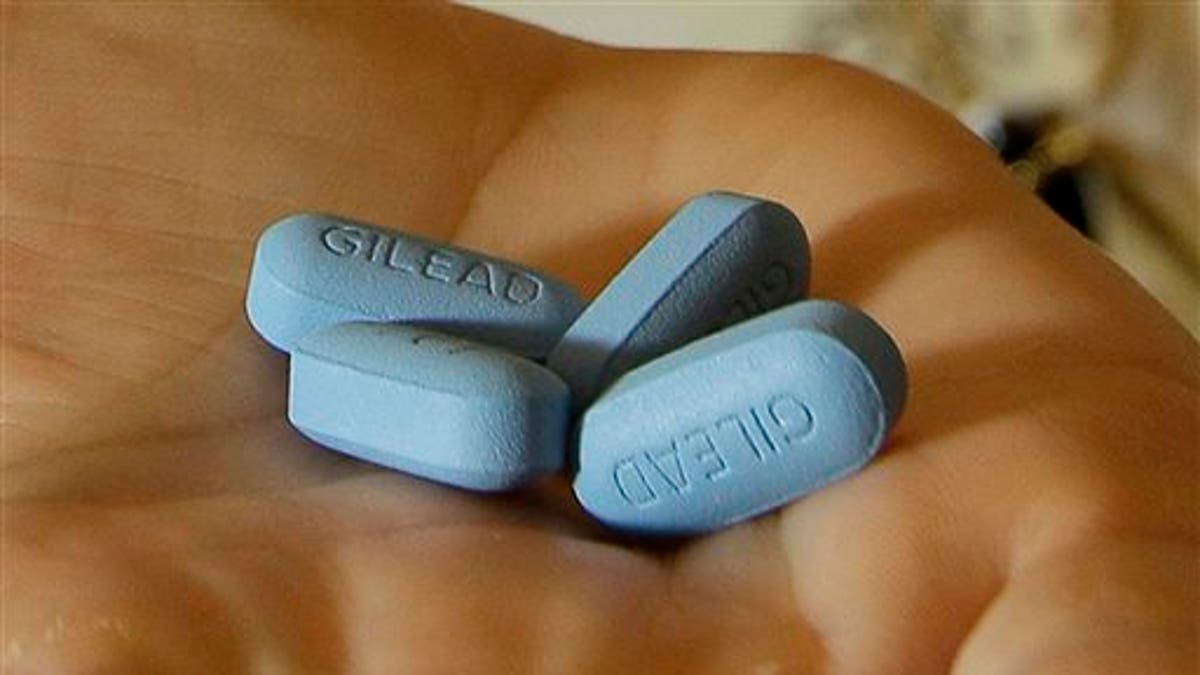
In this Thursday, May 10, 2012 file photo, a doctor holds Truvada pills at her office in San Francisco. (AP Photo/Jeff Chiu)
Only a small proportion of gay and bisexual men who could have taken a daily pill to reduce their risk of HIV actually did so in 2014, according to a new study.
Furthermore, young gay and bisexual men and those of color, who are among the groups most at risk for infection with the human immunodeficiency virus (HIV), were less likely to be taking the medication than their older and white counterparts.
Unequal use of the drug, called Truvada, may worsen the disparities between races in HIV rates, said lead author Henry Raymond, of the San Francisco Department of Public Health.
"We don't want to leave anyone behind," he told Reuters Health.
Truvada, manufactured by Gilead, is a combination of two antiretroviral drugs that work to keep HIV, which causes AIDS, from replicating in the body. Approved by the U.S. Food and Drug Administration in 2012, Truvada is often just referred to as PrEP, which stands for pre-exposure prophylaxis.
Gay and bisexual men who regularly take Truvada reduce their risk of HIV by 90 percent, according the U.S. Centers for Disease Control and Prevention (CDC).
For the new study, reported in the journal Sexually Transmitted Infections, Raymond's team analyzed data from 411 gay and bisexual men living in San Francisco in 2014.
About three-fourths of the men said they were HIV-negative - and of those, 64 percent met one of the CDC's criteria for Truvada use. Those criteria are having an HIV-positive partner, not being in a monogamous relationship with an HIV-negative partner, having anal sex without a condom or having a sexually transmitted infection in the past six months.
But while nearly two-thirds were eligible for Truvada, only about 14 percent of those eligible men said they had used it at some point in the past year.
When the researchers applied the study's results to the wider population of gay and bisexual men in San Francisco, they estimated that 27,745 men met the CDC's guidelines for Truvada but weren't using the drug.
About 80 percent of young gay and bisexual men between ages 18 and 24 met one of those criteria, compared to about 29 percent of men 55 years old or older, the study found. Yet, none of the younger men reported using Truvada.
About 23 percent of white gay and bisexual men who met the CDC's criteria took the pill, compared to about 4 percent of Hispanic men, 7 percent of Asian men and 8 percent of black men, the researchers found.
According to the CDC, 44,703 people in the U.S. were diagnosed with HIV in 2014 - and about 25 percent of new infections were in black gay and bisexual men. About 18 percent of those new cases were among gay and bisexual males ages 13 to 24.
"There (are) pretty marked disparities in who is using and who is not using PrEP," said Dr. John Schneider, who directs the Chicago Center for HIV Elimination at the University of Chicago.
There could be several reason why certain people are less likely to use Truvada, he told Reuters Health, including structural factors like lack of insurance, incarceration rates and how often people see their doctors.
The researchers caution that the study's results are limited. For example, the data were collected only two years after Truvada was approved for PreP.
Raymond also said the results may not reflect Truvada use in other parts of the U.S.
Schneider, who was not involved with the new study, also cautioned that the CDC's criteria for PrEP use may not be applicable to all gay and bisexual men.
"From our data (on) black men who have sex with men who turned HIV-positive, half of those guys were not eligible for PrEP by the CDC guidelines, which means the CDC guidelines may be missing the most vulnerable men," he said.
Continuing to educate people about PrEP, changing the social stigma around its use and altering some of the public health approaches may help address some of the disparities, said Schneider.




















